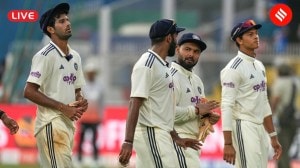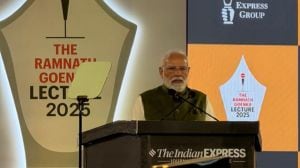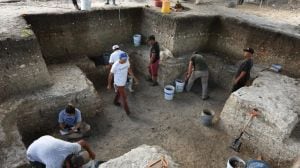Iran allows rare peek at nuclear site
Iran opened one of its nuclear sites to a large number of local and international reporters...

Iran opened one of its nuclear sites to a large number of local and international reporters and a delegation of foreign ambassadors on Saturday in an effort to show the transparency of its programme before a United Nations Security Council deadline this month.
Delegations from the Non-Aligned Movement, Group of 77 and League of Arab States arrived at the Isfahan Uranium Conversion Facility in central Iran with nearly 100 reporters. The delegation included representatives from the United Nations nuclear agency from Algeria, Cuba, Egypt and Malaysia, though none were official inspectors.
Iran has kept up efforts to give the Isfahan facility more publicity, and a senior tourism official said last year that Iran planned to open it and other nuclear sites to tourists.
Iran’s ambassador to the International Atomic Energy Agency, Ali Asghar Soltanieh, said on Saturday that the purpose of the tour was to assure the world that Iran’s programme was peaceful.
“In fact we have representatives from all over the world,” Soltanieh said. “We decided to have them come here and see for themselves.” He emphasised that surveillance cameras of the United Nations’ International Atomic Energy Agency were in place there.
Photographers and video camera operators were not allowed to take pictures in the outside area of the compound. But the visitors were given special clothes, gloves and masks to protect them from radiation and toured the main facility for nearly an hour.
The Isfahan site is where uranium ore is converted into yellowcake and gas. The gas is then transferred to a more sophisticated facility in Natanz, where it could be enriched with centrifuges.
Reporters on Saturday passed the Natanz enrichment facility but were not permitted to tour the site, where Iran recently said it was installing 3,000 centrifuges. The facility, like Isfahan, it was surrounded by antiaircraft artillery. Isfahan also had air-raid bunkers.
Iran insists that its programme is for electricity production, but US and European countries contend that it is part of an effort that could produce enriched uranium to make nuclear weapons.
The tour occurred as a UN deadline neared this month for Iran to suspend its uranium enrichment programme or face tougher economic sanctions. The UN Security Council passed a resolution on December 23 banning the trade of goods and technology related to Iran’s nuclear programme.
–NAZILA FATHI





- 01
- 02
- 03
- 04
- 05


























